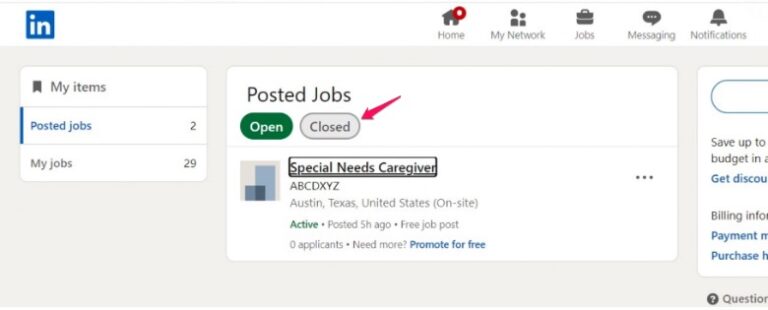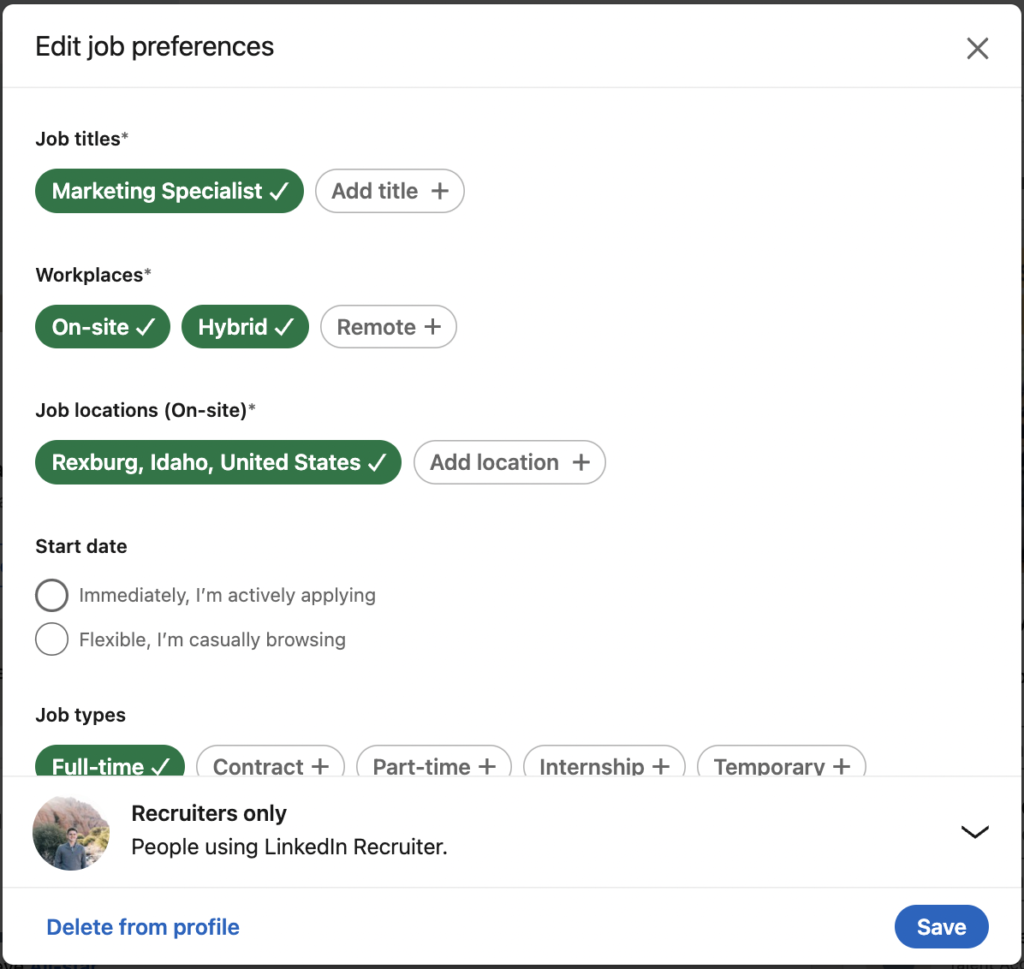So, you've applied for a job on LinkedIn and now you want to withdraw your application. Maybe you found a different opportunity, or perhaps you've reconsidered your career direction. Whatever the reason, it’s perfectly normal to change your mind. In this guide, we’ll walk you through the reasons to withdraw your application and how to do it smoothly, ensuring you maintain professionalism throughout the process.
Understanding the Importance of Withdrawing Applications

Withdrawing a job application on LinkedIn isn’t just about hitting a button—it's about maintaining your professional reputation and being respectful to recruiters and hiring managers. Here’s why it’s essential to understand the significance of this action:
1. Professional Reputation
When you apply for a job, you enter into a professional relationship with the company, even if it's just at the initial stages. If you’ve decided that you no longer wish to pursue an opportunity, it’s courteous to inform the company. This helps you build a reputation as someone who is considerate and maintains transparency in their job search.
2. Respecting the Hiring Process
Recruiters invest time and effort reviewing applications, conducting interviews, and selecting candidates. By withdrawing your application formally, you are respecting their process and allowing them to focus on other candidates who are genuinely interested in the position. Consider it a way of giving back time, as well as an opportunity for someone else who may be a better fit.
3. Keeping the Door Open
If you withdraw your application gracefully, it doesn’t close the door forever. Companies appreciate candidates who handle situations professionally. You may want to apply for a different position at the same company in the future, and doing so respectfully may leave a positive impression. Who knows? You might get a call back for an even better role down the line!
4. Reassessing Your Job Goals
Withdrawing an application allows you to take a step back and reassess your career goals. It’s a chance to think about what you truly want in your next job. This self-reflection can be invaluable in ensuring that your next move aligns with your long-term aspirations.
5. Mental Clarity
The job search can be daunting, and applying for positions without clarity on your desires can lead to unnecessary stress. By withdrawing applications that no longer resonate with you, you're not just making space for better opportunities; you’re also freeing up mental space. Remember, it’s about quality, not just quantity, when it comes to job applications!
In summary, understanding the importance of withdrawing your job application on LinkedIn goes beyond the click of a button. It’s about professional courtesy, respect for the hiring process, and ensuring that you are on the right career path. Let's move on to how you can actually withdraw your application effectively!
Also Read This: How to Look Up Someone Anonymously on LinkedIn: Viewing Profiles Without Revealing Your Identity
3. Step-by-Step Guide to Withdraw Your Job Application

So, you've decided to withdraw your job application on LinkedIn. Whether you've found another opportunity or just changed your mind, it’s a simple process. Here’s a step-by-step guide to help you navigate it smoothly:
- Log into Your LinkedIn Account: Start by logging into your LinkedIn account. If you’re already logged in, you can skip this step!
- Go to the Jobs Section: On your LinkedIn homepage, you'll find the "Jobs" tab at the top of the page. Click on this to access your job applications.
- View Your Applications: Under the Jobs tab, navigate to “My Jobs.” This section contains all the job applications you've submitted through LinkedIn.
- Locate the Job: Scroll through your list of applications to find the one you wish to withdraw. It might help to remember specific details about the job listing, like the company name it was associated with.
- Click on the Job Title: Once you’ve found the job, click on the title to access the job posting details.
- Withdraw Your Application: Look for the option that says “Withdraw application.” Click on it, and a confirmation message may pop up asking if you’re sure you want to withdraw.
- Confirm Your Decision: If you’re sure, confirm the withdrawal. You’ll receive a notification that your application has been successfully withdrawn.
And that’s it! You’ve successfully withdrawn your job application. Now, remember to take a moment to reflect on your reasons for withdrawing, as this can help you in future job searches. Whether it’s reconsidering the job role or pursuing a different path, being clear about your reasons can lead to better decisions down the line!
Also Read This: How to Request an Endorsement on LinkedIn: Best Practices
4. Common Reasons for Withdrawing an Application
Withdrawing a job application isn’t always a negative move. In fact, there are many common reasons why candidates choose to take this step. Understanding these reasons can not only validate your decision but also help others who might be feeling uncertain. Here’s a rundown of some typical scenarios:
- Found Another Opportunity: Perhaps you received a job offer that aligns better with your career goals or personal preferences. It’s completely normal to pursue what feels right!
- Changes in Career Goals: You might have realized that the position doesn’t fit your long-term career aspirations. Reflecting on what you truly want can be empowering.
- Company Culture Concerns: After further research, you might have concerns regarding the company culture or values that don’t align with your own.
- Personal Reasons: Sometimes life gets in the way! Whether it's family obligations, health issues, or simply needing a pause, personal circumstances can lead to the decision to withdraw.
- Realizing the Job Isn’t What You Expected: After learning more about the role, you may feel it doesn’t match your skill set or interests. Being honest with yourself is crucial!
- Timing Issues: If the timeline for the interview process doesn’t fit with your schedule or other commitments, it’s perfectly acceptable to withdraw your application.
As you can see, withdrawing a job application can be a thoughtful and smart choice. Whatever your reason may be, prioritizing your career satisfaction is key. Don’t let fear or worry about how it might be perceived stop you from making the best decision for your future!
Also Read This: What Is a Good Click-Through Rate on LinkedIn and How to Improve It?
5. What to Consider Before Withdrawing Your Application
Withdrawing a job application is a significant decision. Before you hit that withdraw button on LinkedIn, there are several factors to ponder. Here are some important considerations to keep in mind:
- The Reason for Withdrawal: Are you withdrawing due to a better job opportunity, a change in your career goals, or perhaps because the company culture didn’t align with your values? Whatever the reason, make sure it’s a valid one — especially if you might want to apply to the company again in the future.
- Future Opportunities: The job you’re currently applying for isn’t just a position; it’s a potential stepping stone in your career. Consider if you might want to work for this company later on. Withdrawing could close that door if you don’t approach it thoughtfully.
- Your Current Job Situation: Are you currently employed and happy in your role? If so, think carefully about the timing of your withdrawal. Sometimes, staying in the application process can serve as a safety net while you evaluate other options.
- Professional Relationships: If you have met the hiring manager or interacted with team members, consider how withdrawing could affect those relationships. Networking is crucial, and maintaining a good reputation with your contacts is important for your career.
- Emotional Readiness: Are you sure withdrawing won’t lead to regret? Make sure you’re confident in your decision. Taking a moment to reflect can help ensure you don’t make a choice you’ll wish you could reverse later.
Ultimately, the decision should feel right for you and align with your career goals. It’s perfectly acceptable to step back if it doesn’t feel like a good fit, but ensure you do so with clear reasoning in mind.
Also Read This: How to Download Your LinkedIn Resume: A Step-by-Step Process
6. Frequently Asked Questions about Withdrawing Applications on LinkedIn
Withdrawing your job application on LinkedIn can raise questions about the process and potential repercussions. Here are some common queries to help clarify things:
| Question | Answer |
|---|---|
| Is withdrawing my application visible to others? | No, when you withdraw your application, it’s confidential. The hiring manager will be notified, but it won’t be publicly visible on your profile. |
| Can I reapply for the same job later? | Yes, you can reapply! Just keep in mind that withdrawing could impact their perception of your reliability, so a solid reason is essential. |
| Will withdrawing affect my LinkedIn profile or connections? | No, withdrawing doesn’t impact your profile visibility or connections. Your network won’t see any changes related to your application status. |
| How long does it take to process a withdrawal? | Withdrawals are typically processed immediately, so you can rest easy knowing your application is no longer under consideration. |
| What if I regret my decision after withdrawing? | If you change your mind, don’t hesitate to reach out to the recruiter or hiring manager. Explain your situation, and they may still consider your candidacy! |
Whether you’re nervous about withdrawing or still have questions, remember that it’s a common part of the job search process. The key is to make informed decisions that align with your career path and personal aspirations.
Conclusion: Making the Right Choice for Your Career
Withdrawing a job application on LinkedIn can be a significant decision, and it’s important to ensure that it aligns with your long-term career goals. Here are some key considerations to help you make the right choice:
- Assess Your Reasons: Take a moment to reflect on why you want to withdraw your application. Is it due to a change in career direction, a better opportunity, or perhaps a misalignment with the company culture?
- Think About Future Opportunities: Consider how withdrawing might affect your relationship with the employer. If the company is one that you may want to connect with again in the future, it’s worth weighing your options carefully.
- Stay Professional: If you decide to withdraw, be courteous in your communication. A brief message thanking the employer for considering your application while expressing your decision can leave a positive impression.
Ultimately, the choice to withdraw an application should stem from a thoughtful evaluation of your current situation and future aspirations. Remember, your career is a long journey, and each decision you make should propel you towards fulfillment and success. If withdrawing your application is what feels right, embrace it as a step towards finding the right fit for you.
 admin
admin








